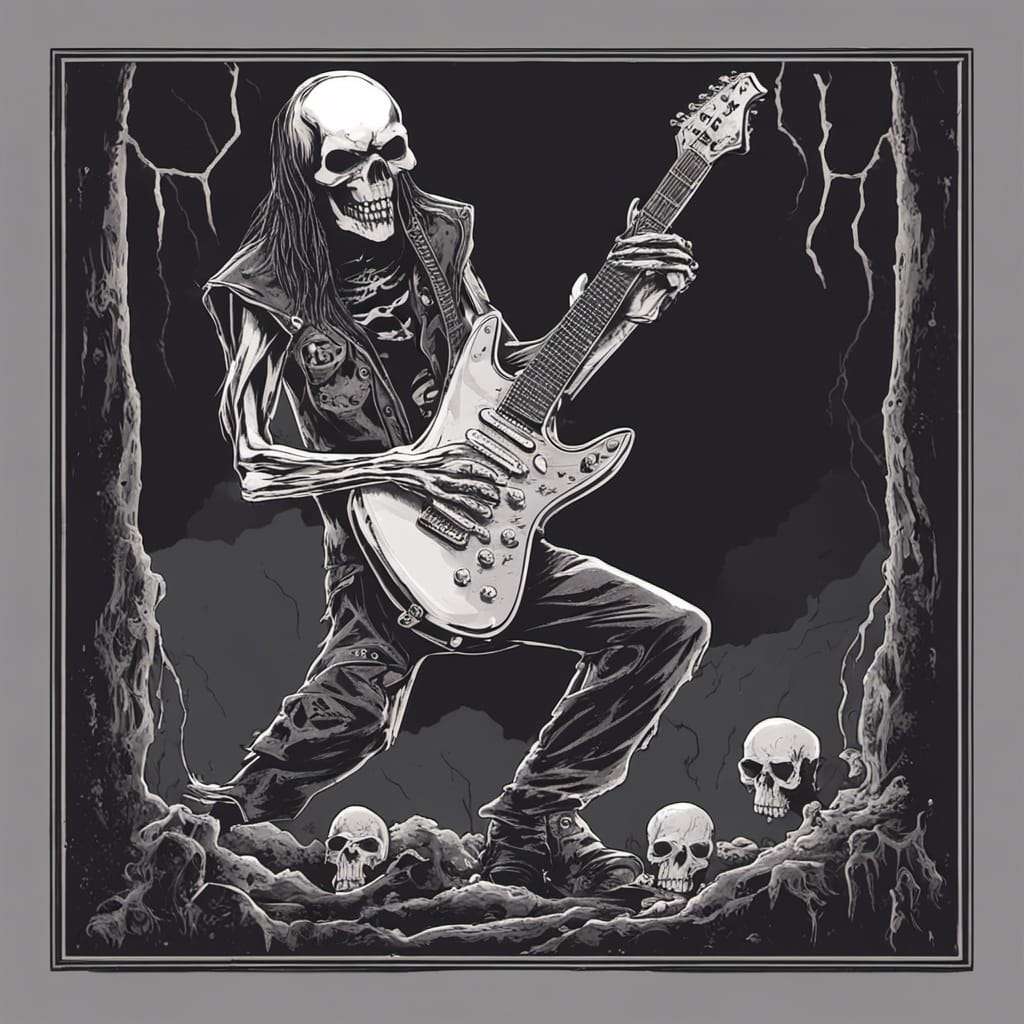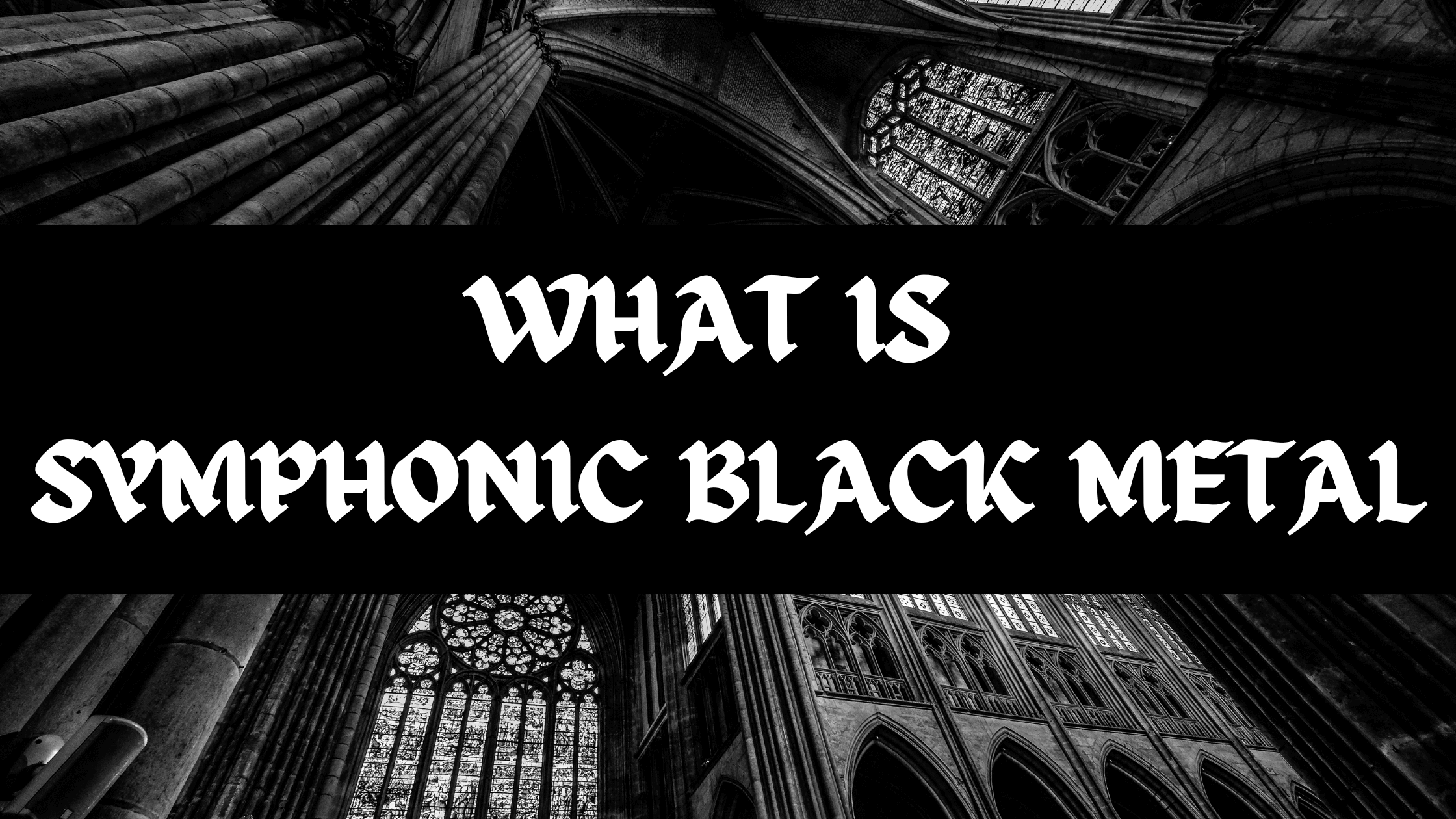In the vast realm of heavy metal, a subgenre emerges, veiled in darkness and adorned with orchestral grandeur – Symphonic Black Metal. This intriguing fusion of black metal’s raw intensity with symphonic elements has captured the hearts of many metal enthusiasts in recent years. In this exploration, we will delve into the origins, characteristics, and significance of symphonic black metal music, a genre that continues to rise in prominence within the metal community.
Origins and Evolution of Symphonic Black Metal
To understand symphonic black metal, we must first trace its roots back to the early days of black metal music. Originating in the early 1980s, black metal was characterized by its aggressive guitar riffs, shrieking vocals, and a penchant for embracing the dark side of life. Bands like Venom and Bathory laid the foundations for this subgenre, crafting an atmosphere drenched in occult mysticism and rebellion against societal norms.
However, it was in the 1990s that symphonic black metal began to take shape as a distinct musical entity. Pioneering bands like Emperor, Dimmu Borgir, and Cradle of Filth emerged, introducing symphonic elements that added layers of complexity to the traditional black metal sound. Emperor’s iconic album “Anthems to the Welkin at Dusk” stands as a testament to the genre’s evolution during this period.
Defining Characteristics of Symphonic Black Metal
Symphonic black metal is a genre that can be recognized by several defining characteristics. At its core, it retains the aggressive and atmospheric qualities of black metal but incorporates orchestral instruments, choirs, and symphonic arrangements to create a sense of grandiosity and otherworldly beauty. This blending of the brutal and the beautiful is what sets symphonic black metal apart from its counterparts.
The use of orchestral elements allows for a broader sonic palette, giving the music a cinematic quality. Symphonic black metal compositions often take the listener on a journey through a dark and fantastical realm, evoking emotions ranging from despair to awe. Lyrically, the genre frequently explores themes of mysticism, darkness, and existential introspection, inviting listeners to delve into the depths of the human psyche.
Symphonic black metal’s ability to conjure vivid mental landscapes and emotional depths makes it a unique and captivating genre that continues to captivate audiences around the world.
As symphonic black metal gains traction and recognition within the metal community, its influence on the broader musical landscape becomes increasingly evident. It serves as a testament to the genre’s enduring appeal and its ability to transcend the confines of traditional metal boundaries.
Key Influences and Inspirations
Symphonic black metal, with its intricate blend of brutality and beauty, draws from a rich tapestry of musical influences that have shaped its unique sound. To truly appreciate this subgenre, one must delve into the diverse wellspring of inspiration that has given birth to its haunting melodies.
Musical Influences
At the heart of symphonic black metal lies a deep reverence for classical music. The grandiosity, complex arrangements, and emotive power of composers like Wagner, Tchaikovsky, and Stravinsky have left an indelible mark on this subgenre. It’s in the sweeping orchestral compositions and the majestic use of strings, horns, and choirs that we hear echoes of these classical masters. The symphonic element elevates the genre to a level of sophistication that transcends the visceral aggression of traditional black metal.
Film scores also play a pivotal role in shaping the sonic landscape of symphonic black metal. Composers such as Hans Zimmer, Howard Shore, and Ennio Morricone have demonstrated the power of music to evoke emotions and create vivid imagery. Symphonic black metal bands draw from this cinematic quality, crafting compositions that transport listeners to otherworldly realms filled with darkness and wonder.
Most famous Compositions and iconic Albums
Several compositions and albums within the symphonic black metal canon exemplify these influences:
- Emperor’s “Anthems to the Welkin at Dusk”: This landmark album showcases the band’s adeptness at combining symphonic elements with the raw aggression of black metal. Tracks like “Ye Entrancemperium” and “The Loss and Curse of Reverence” demonstrate the subgenre’s ability to create a grandiose atmosphere.
- Dimmu Borgir’s “Enthrone Darkness Triumphant”: Often regarded as one of the defining albums of symphonic black metal, it weaves orchestral elements seamlessly into the music. Tracks like “Mourning Palace” and “In Death’s Embrace” are prime examples of the band’s symphonic prowess.
- Cradle of Filth’s “Dusk… and Her Embrace”: This album encapsulates the dark, Gothic charm of symphonic black metal. With songs like “Funeral in Carpathia” and “A Gothic Romance,” Cradle of Filth demonstrates their knack for combining orchestral elements with a theatrical flair.

Notable Symphonic Black Metal Bands and Artists
To truly grasp the essence of symphonic black metal, one must acquaint themselves with the visionaries who have molded and shaped this subgenre over the years. These bands and artists have not only contributed to its evolution but have also set the stage for its continued growth.
Dimmu Borgir
Dimmu Borgir, hailing from Norway, stands as a towering figure in the world of symphonic black metal. Formed in 1993, the band has consistently pushed the boundaries of the genre. They are known for their elaborate stage productions and a sound that marries extreme metal with orchestral arrangements. Albums like “Enthrone Darkness Triumphant” and “Death Cult Armageddon” exemplify their mastery of symphonic black metal.
Cradle of Filth
Cradle of Filth, a British band formed in 1991, introduced a Gothic sensibility to symphonic black metal. Their music often incorporates elements of horror and dark romance, creating a theatrical experience for the listener. “Dusk… and Her Embrace” and “Cruelty and the Beast” are seminal albums that showcase their unique approach to the genre.
Emperor
Emperor, another Norwegian band, played a pivotal role in the development of symphonic black metal. Their album “Anthems to the Welkin at Dusk” is a testament to their ability to merge the symphonic with the ferocious. Emperor’s influence on the subgenre can hardly be overstated, as they helped lay the groundwork for many bands that followed.
While Dimmu Borgir, Cradle of Filth, and Emperor are undeniably influential, the world of symphonic black metal is teeming with talent. Bands like Limbonic Art, Carach Angren, and Septicflesh have made significant contributions to the genre, each with their own unique take on the symphonic and the black.
The Global Reach of Symphonic Black Metal
Symphonic black metal, once a niche subgenre, has transcended geographical boundaries to become a global phenomenon. Its haunting melodies and grandiose compositions have resonated with listeners from diverse cultures, leading to a remarkable international appeal.
Diversity Across Borders
One of the most intriguing aspects of
symphonic black metal is its ability to embrace diversity while maintaining a cohesive identity. Bands from various countries have incorporated their unique cultural elements into the subgenre, resulting in a rich tapestry of sounds and themes.
Notable International Bands
From Scandinavia to Asia and beyond, symphonic black metal has found its voice in bands from around the world. For instance, Japan’s Sigh has blended traditional Japanese instruments with symphonic elements, creating a fusion that’s both innovative and captivating. Russia’s Dimicandum brings a unique Eastern European flavor to the genre with their use of folklore-inspired melodies.
Global Fan Base
Symphonic black metal’s global fan base is a testament to its wide-reaching appeal. Concerts and festivals dedicated to the subgenre draw attendees from all corners of the world, fostering a sense of community among fans who share a passion for this darkly enchanting music.
Criticisms and Controversies
Like any genre, symphonic black metal has not been immune to criticisms and controversies. These debates have revolved around issues of authenticity, commercialization, and ideological clashes with traditional black metal purists.
Questioning Authenticity
One common criticism leveled against symphonic black metal is the perception that it dilutes the raw, underground essence of traditional black metal. Some argue that the genre’s reliance on orchestral elements and elaborate production can compromise the primal energy that characterizes black metal.
Commercialization Concerns
As symphonic black metal has gained popularity, it has also faced accusations of commercialization. Detractors argue that the subgenre’s accessibility and appeal to wider audiences have led to a shift in priorities, potentially compromising the artistic integrity of some bands.
Clashes with Traditionalists
Symphonic black metal has at times found itself at odds with purists within the black metal community. Traditionalists who adhere strictly to the raw and minimalistic origins of black metal have criticized symphonic bands for deviating from the genre’s core principles.
Counterarguments and Diverse Perspectives
While criticisms are valid to an extent, symphonic black metal has its defenders who argue that its evolution is a natural progression in the genre’s history. They contend that embracing symphonic elements allows for greater musical experimentation and emotional depth, ultimately enhancing the genre’s artistic range.
Symphonic Black Metal in Popular Culture
Symphonic black metal, once an obscure subgenre, has left a lasting imprint on popular culture, extending beyond the realm of music.
Film, Television, and Video Games
The subgenre’s dramatic and cinematic qualities have made it a popular choice for soundtracks in film, television, and video games. Its epic and emotional compositions have set the stage for intense scenes and immersive storytelling.
Collaborations and Cross-Genre Experiments
Symphonic black metal’s willingness to experiment has led to collaborations with artists from other musical genres. These collaborations have expanded its reach and introduced its unique sound to new audiences.
Awards and Recognition
In recent years, symphonic black metal has gained recognition and accolades, further solidifying its place in the broader musical landscape. Awards and nominations from prestigious institutions highlight its impact and influence in the world of music.

The Future of Symphonic Black Metal
As symphonic black metal continues to captivate audiences worldwide, its future promises a compelling journey into uncharted territory. While we can’t predict with absolute certainty where the subgenre is headed, we can certainly speculate on potential directions, emerging trends, and its broader impact on the metal music landscape.
Evolution and Innovation
One can anticipate further evolution within symphonic black metal. Bands are likely to explore new sonic dimensions, experiment with unconventional instruments, and push the boundaries of orchestration. This evolution may bring about innovative compositions that challenge the traditional notions of what symphonic black metal can be.
Emerging Trends
One noticeable trend is the fusion of symphonic black metal with elements from other subgenres, such as progressive metal and folk metal. This cross-pollination of styles has the potential to create intriguing hybrids that expand the subgenre’s horizons. Additionally, a growing interest in themes rooted in folklore, mythology, and ancient cultures may inspire lyrical and musical exploration.
Shaping the Metal Landscape
Symphonic black metal’s influence on the broader metal music landscape is undeniable. It has encouraged a greater appreciation for the complexities of composition, inspiring other subgenres to incorporate orchestral elements and experiment with their sound. The subgenre’s emphasis on atmosphere and storytelling has set a standard for immersive musical experiences that transcends metal’s traditional boundaries.
Conclusion
In the realm of heavy metal, few subgenres possess the ability to evoke such a wide range of emotions and atmospheres as symphonic black metal. Its enduring appeal lies in its ability to merge the primal and the profound, crafting a sonic journey that resonates deeply with listeners.
In this exploration of symphonic black metal, we’ve uncovered its origins, defining characteristics, notable bands, and its global reach. We’ve delved into the controversies and criticisms it has faced, while also highlighting its influence on popular culture.
Looking to the future, symphonic black metal remains a genre ripe with potential. Its evolution and innovation will likely lead to fresh and captivating compositions that push artistic boundaries. As it continues to shape the broader metal music landscape, we can anticipate new subgenres and experiments emerging from its influence.
In conclusion, symphonic black metal is more than a genre; it’s a testament to the power of music to transport us to otherworldly realms, to evoke powerful emotions, and to challenge our perceptions of what metal can be. As you embark on your own exploration of symphonic black metal, I encourage you to dive into the albums and tracks mentioned in this article. Let the haunting melodies and grandiose compositions guide you through a musical tapestry rich in darkness and beauty. The future of symphonic black metal holds the promise of even greater sonic adventures, and I invite you to be a part of this captivating journey.

